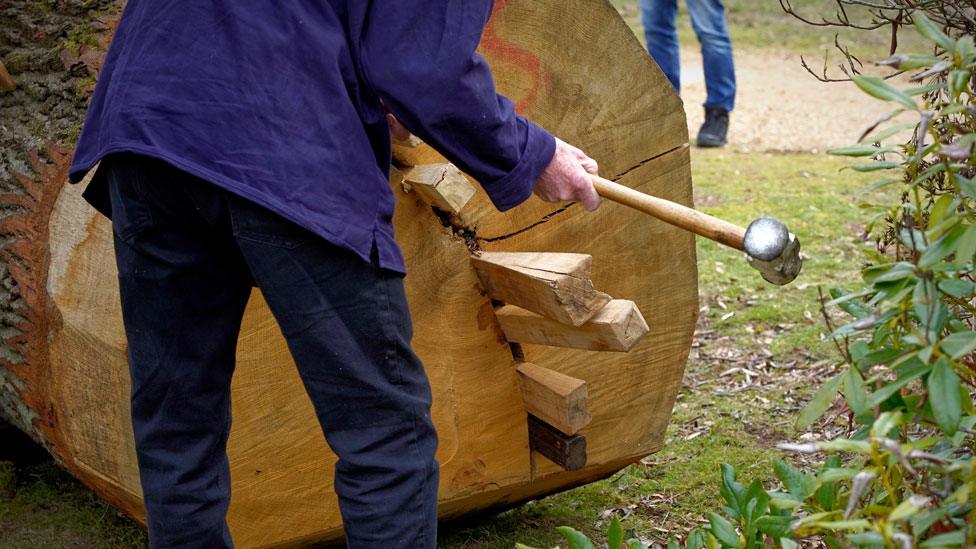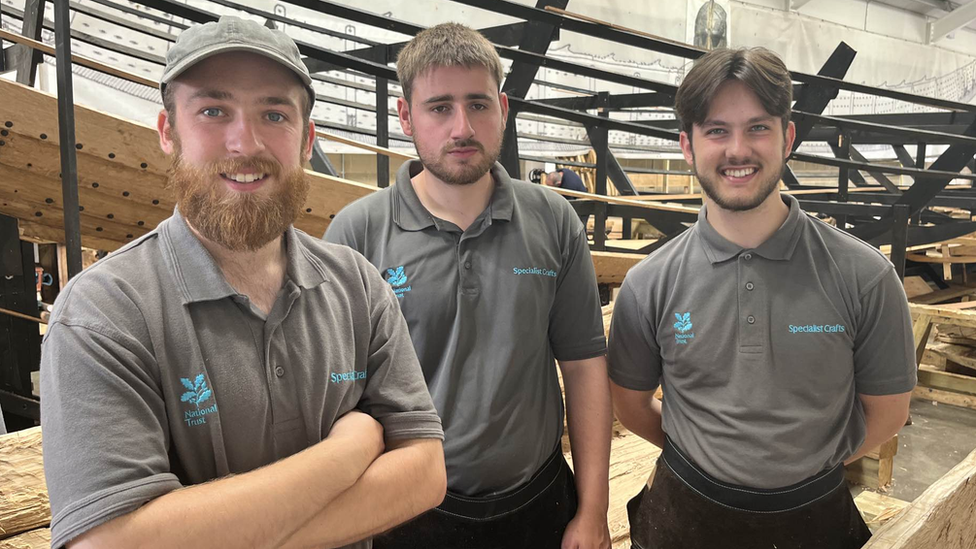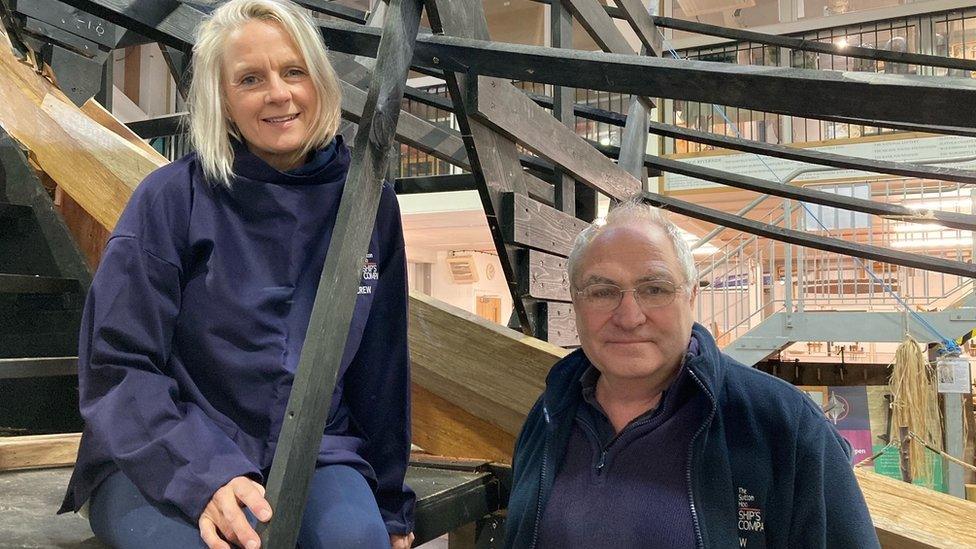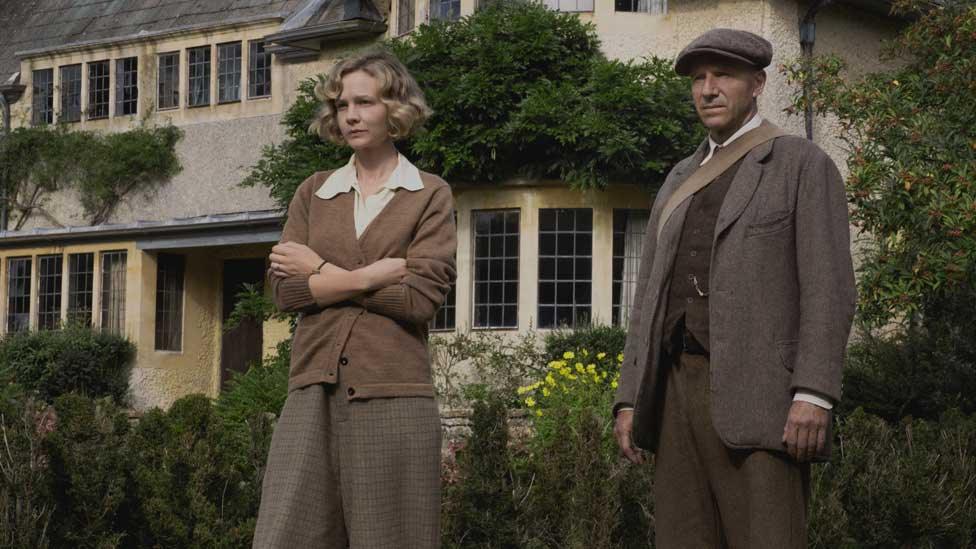Sutton Hoo replica boat build needs last three oak trees
- Published

If they manage to source the last few trees they can start sea trials in 2025, said project manager Jacq Barnard, seen with master shipwright Tim Kirk
A team of volunteers recreating the Anglo-Saxon burial ship found at Sutton Hoo are appealing for help sourcing the three oak trees needed to complete it.
The 88ft (27m) reconstruction of the ship, excavated in 1939, is being built in neighbouring Woodbridge in Suffolk.
It has used "about a dozen" oak trees so far, but the project is struggling to get hold of the last few it needs.
Project manager Jacq Barnard said: "If we can get these trees, we will be finished and afloat by summer 2025."

The ship was under a mound and all that remained of it were the iron rivets, the impression left in the earth by the wooden hull which had rotted, and the treasures buried with it

The Sutton Hoo Ship's Company the trees would be transformed into planks and attached to the ship's sides
The ship's "backbone" - including the keel, stem and sternpost - has been built and its carpenters have been attaching planks with rivets, using traditional methods.
Ms Barnard said "another three good large trees" should be enough to complete its planking.
"About a dozen" oak trees, mostly from East Anglia, have been donated to the £1.5m project, she said, while it paid felling and delivery costs.
The story of the ship's discovery was told in the Netflix film The Dig, starring Carey Mulligan and Ralph Fiennes.
It was believed to be the burial ship and grave of King Rædwald - the 7th Century Anglo-Saxon ruler of East Anglia.

The project needs trees that are at least 6m (19ft) long and clear of branches
"Anglo-Saxons had access to much larger trees than us and we're really having to search to find the trees needed to replicate what they did," Ms Barnard explained.
"They need to be 1.2m (4ft) at chest height and be 6m-10m (19ft-32m) long.
"They also need to be clear of branches and free from knots or other defects."
Ms Barnard hopes they will get hold of the last three trees needed before the end of this year's felling season, so within the next few weeks.

Buried with the ship was the iconic Anglo-Saxon warrior's helmet, which is on permanent display at the British Museum in London

The volunteer carpenters only use the methods available to Anglo-Saxon ship builders
In the meantime, the project has fulfilled one of its key commitments.
"We pledged we'd replace the oak trees used in a 20-to-one ratio and we've just planted 400 saplings at Grundisburgh," she said.
They have been planted on five acres (2.02ha) donated by Bill Mayne and underplanted with 1,600 shrub and tree species by the Woodland Trust.
The project is supported by 142 volunteers with a range of skills from carpentry to photography.

Follow East of England news on Facebook, external, Instagram, external and X, external. Got a story? Email eastofenglandnews@bbc.co.uk, external or WhatsApp 0800 169 1830
Related topics
- Published12 August 2023

- Published21 December 2022

- Published21 November 2021

- Published10 November 2021

- Published16 September 2021

- Published17 January 2021
